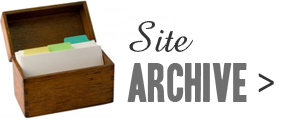[Introductory Post: Interviews with The Hindu Crossword Setters]

[Answers posted verbatim]
Q1. Great to have you talking with us, Ms. Jaggi. Please tell us about yourself and how you got introduced to crosswords.
Nitaa Jaggi: I was always good in literature during my school days and loved solving puzzles. I indulged in a lot of word games. I got my basic education from one of the best schools in Mumbai - Arya Vidya Mandir, Santacruz. During school days we never had to just write answers directly from the text, always had to use reference material to form an answer. This made me sit in the library for hours together doing up projects as well as it formed the habit of reading. I was always armed with a dictionary and a thesaurus. After school, I did my B.Com from Narsee Monjee College of Commerce& Economics, Mumbai.
Initially I used to attempt the simple quick crosswords appearing in the local dailies. However, I was always fascinated with the cryptics appearing in The Economic Times.
It is a self-taught art, books helped me in constructing cryptics. My first cryptic crossword appeared in DNA newspaper followed by semi-cryptic Information Technology crosswords for Digit IT Magazine and then the cryptics for The Hindu.
Q2: How did you get into setting crosswords for The Hindu?
Nitaa Jaggi: I was approached by Ms. Meena Menon who works for the Mumbai office of The Hindu, to set crosswords for their paper. I think she got my profile thru’ the net. Then I had a talk with the editorial department of the newspaper with regards to my terms and conditions. I was adamant that I would not work without a credit line. This proved beneficial for the other setters also, as they also got credit for their respective crosswords.
Q3: Your credit line in the papers is “Nita Jaggi” at some places, “Nitaa Jaggi” at others. Which is the right way to spell your name?
Nitaa Jaggi: I prefer to write my name as Nitaa Jaggi rather than Nita Jaggi.
Q4: You hold the record of setting the maximum number of crosswords in India. How many have you set, for which publications?
Nitaa Jaggi: I have set approximately 1700 crosswords till date and on various themes namely - Bollywood, Hollywood, sports, food, finance, codeword, quickword, anagrams and cryptics. Currently I construct the Gigantika crossword for Afternoon- Despatch & Courier newspaper, which is published every Wednesday. I also do the finance crossword for the RBI for their In house magazine Without Reserve. Last year I had constructed a 25x25 Finance crossword to commemorate their Platinum Jubilee celebrations. The entire crossword - the words and clues were totally thematic in nature that is pertaining to RBI’s history, growth and policies so far.
Q5: How long have you solved crosswords of the cryptic kind? Which crosswords/setters do you most enjoy solving?
Nitaa Jaggi: Among the Hindu setters, I love to solve Sankalak’s crosswords. I really like his clueing style.
Q6: As you're probably aware, your crosswords in The Hindu are not popular among solvers online. Do you think that the harsh criticism is linked more to your byline than the puzzle, that the same "error" might have been overlooked had the puzzle carried another setter's name? If the crosswords were published anonymously, would the opinions have been more balanced?
Nitaa Jaggi: I am really not bothered about criticism. I take it in a constructive manner. I set cryptics largely keeping the general readers in mind and not the niche section. It’s no use if only a handful of the ‘very intelligent’ section can solve the crosswords, one has to keep the general IQ in mind.
Q7: When you write a clue that doesn't follow the conventional norms of cryptic clues - such as "Refreshments are in a mess (4)" for MEAL, what is the thought process behind it? Is it that to a majority of solvers, the technical aspects will not matter?
Nitaa Jaggi: I have sent my cryptic crosswords to editors abroad and have received their feedback regarding the clues and how to improve them; hence I know that I am on the right track with regards to the construction of clues.
Q8: How important is solvers' feedback for you?
Nitaa Jaggi: Feedback is very important for me and I respect my readers’ views and comments for that. I do see a change in my clueing style over the years as a crossword constructor and I am quite satisfied with the same. One always grows in the thought process also.
Q9: What is your method of setting? How long does it take you to set a typical 15x15?
Nitaa Jaggi: I do not set the clues in a sequence. I set it according to the words and I try to use all the clue types in my crossword. At times if I get stuck thinking about a particular clue I go on to the next, but yes I finish one entire crossword and then only get on to the next. I create 40 crosswords a month for different publications.
Q10: You set themed non-cryptic crosswords in other publications. Have you thought of setting themed crosswords for The Hindu?
Nitaa Jaggi: I have actually not thought about setting themed crosswords for The Hindu as I am quite overloaded with work.
Q11: Is crossword setting a natural talent or can it be learnt?
Nitaa Jaggi: I personally feel if one is interested one can really start constructing crosswords. However, one should be dedicated to the profession. I take at least 4-5 hours to make a 15 x 15 crossword.
Q12: How well do the compilers of The Hindu know each other? Do you get to meet and interact, ask each other for a second opinion about a clue?
Nitaa Jaggi: I think so there is a major communication gap between the crossword setters of The Hindu. Being the only woman setter, I feel they lack the skill of communicating.
Q14: Does that make a difference - being a "woman setter"?
Nitaa Jaggi: I feel at times that it is disadvantageous being a woman setter, because some readers do not take woman setters seriously. They feel that how can a woman construct cryptic crosswords. Being based in Mumbai, not many people are into solving cryptics. They prefer the quick and easy to solve kind of crossword. It is just a niche segment who are into cryptics. Hence on a personal level I do not get to interact with readers who are really engrossed into such crosswords, except those on blogs and thru' the net.
Like there was a gentleman from Chennai (a regular solver) who did speak to me on the telephone about my cryptic crosswords. he didn't even know whether 'Nitaa' meant a male or a female.
And the next question directed to me was that how can a woman be intelligent enough to set cryptic crosswords - he was also amazed that setting crosswords was my full time profession and I could actually earn my bread and butter through this profession.
Q15: What are your interests apart from crosswords?
Nitaa Jaggi: Apart from crosswords, I create Wordokus, Sudokus, Plexers, etc. kind of puzzles. No kind of software is used in any of the above puzzles.

Q16: Please share with us some of your memorable crossword-related experiences.
Nitaa Jaggi: I just know that I am doing pretty well because creating themed crosswords is an art by itself. They are systematic grids filled in with all themed words.
Q17: It has been said that the target audience for your puzzles is people who don't care about the finer details of clues and are not aware of crossword blogs. How do you know that your target audience is happy with your puzzles?
Nitaa Jaggi: I do get my feedback by the editorial division of The Hindu - those are the areas which I take seriously as a benchmark for my crosswords. Every crossword I construct I try and improve myself. The very fact my crosswords are working with the masses proves by itself as I am still constructing cryptics for The Hindu.
--------
More Setter Interviews:
| The last interview of the Hindu Crossword Setters special series will be published next Monday. Stay tuned! |
If you wish to keep track of further articles on Crossword Unclued, you can subscribe to it in a reader via RSS Feed. You can also subscribe by email and have articles delivered to your inbox, or follow me on twitter to get notified of new links.


 How much of the artist does Art truly reflect? Take the case of Neyartha's crosswords. The offbeat choice of words, the propensity for specialist themes, the clueing style show a compiler with a distinctive scientific temperament, one who likes to blend entertainment with education. Is he really as we infer from his puzzles? Find out as Neyartha talks about himself, his approach to setting and the influences and interests that have shaped his art.
How much of the artist does Art truly reflect? Take the case of Neyartha's crosswords. The offbeat choice of words, the propensity for specialist themes, the clueing style show a compiler with a distinctive scientific temperament, one who likes to blend entertainment with education. Is he really as we infer from his puzzles? Find out as Neyartha talks about himself, his approach to setting and the influences and interests that have shaped his art.

 Solving Sankalak's puzzles, you get the feeling that the setter is on *your* side – giving you gentle encouragement and moments to savour, never asking too much of you. Pleasant and simple and impeccably clued, Sankalak's puzzles have been a constant source of delight to solvers of The Hindu Crossword since a couple of decades.
Solving Sankalak's puzzles, you get the feeling that the setter is on *your* side – giving you gentle encouragement and moments to savour, never asking too much of you. Pleasant and simple and impeccably clued, Sankalak's puzzles have been a constant source of delight to solvers of The Hindu Crossword since a couple of decades.  A special series is soon to be published on Crossword Unclued, especially for followers of The Hindu Crossword. You've read
A special series is soon to be published on Crossword Unclued, especially for followers of The Hindu Crossword. You've read 







 Follow on Twitter
Follow on Twitter Join us on Facebook
Join us on Facebook Get RSS
Get RSS
